Methods for disinfecting soil before planting seeds for seedlings
Are you preparing the ground for seedlings and thinking about how and what is the best way to disinfect it in order to destroy pathogens of various diseases and insect pests?
Indeed, the process of soil disinfection before sowing seeds is one of the main measures for preparing the soil for the successful cultivation of healthy and strong seedlings, which will further delight us with a good harvest.
Next, we will consider all the main methods of soil cultivation in order to disinfect it.
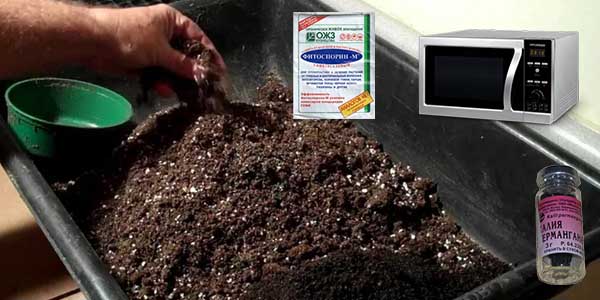
Content
Why is it necessary to disinfect the soil for seedlings
Unfortunately, in the garden soil there can be various pathogenic bacteria and fungi, pests (insect larvae, worms). As a result, such "contaminated" soil can cause disease in your seedlings.To prevent this from happening, you need to be sure to disinfect the ground before planting the seeds and remember to process the seeds themselves.
As for the forest soil, it is known that garden and forest plants do not suffer from the same diseases, which means that such soil should not contain pathogenic bacteria and fungi. However, there can be pests, so heat treatment will not be superfluous (or the use of insecticides).
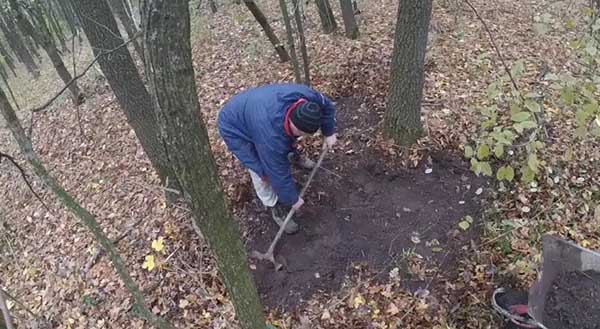
Do I need to disinfect purchased soil
If you want to be completely sure of the soil, it is better to additionally disinfect even the store soil (especially if it raises doubts). Although, in general, it all depends on how much you trust the manufacturer, and how it has proven itself.
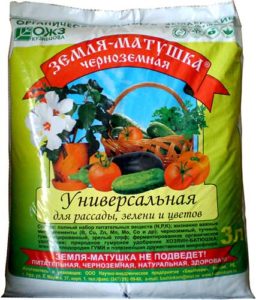
How and what to disinfect the ground for seedlings: ways
In total, there are 4 ways to disinfect soil that you can apply at home:
- 1.freeze;
- 2. calcination;
- 3. steaming;
In general, 2 and 3 are methods of thermal soil cultivation.
- 4. pickling with fungicides and insecticides (chemical or biological).
Next, we will talk about each method separately and in detail, we will reveal the advantages and disadvantages of each of them.
In the cold
Freezing is considered one of the simplest and most popular methods of soil disinfection, however, it has very, very limited effectiveness.
The fact is that even if you can arrange a long (at least a month) freezing of the soil at really low temperatures (below +18 degrees), this will only help you get rid of some soil worms and pest larvae (aphids, ticks, thrips) but against pathogenic bacteria and pathogenic fungi, this method is powerless (even with Siberian 40 degree frosts).
Roasting in the oven
The most effective way of soil disinfection (more precisely, sterilization) is its calcination at high temperatures.
However, this way you are guaranteed get rid not only of pathogenic bacteria, fungi and pests, but also of all beneficial…
Calcined soil is dead soil.
The calcining procedure is as follows:
- Pour soil on a baking sheet with a layer of 2-3 centimeters (no more than 5);
- Place in the oven and heat for 20-30 minutes at 200 degrees.
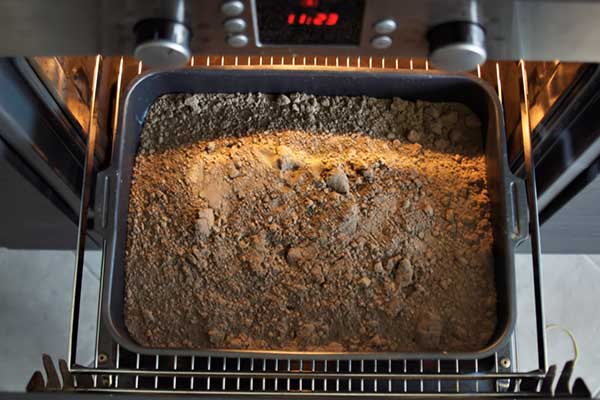
Advice! If you want beneficial microorganisms to remain alive, it is better it is to resort to steaming the soil in the oven at 70-90 degrees and no more.
Steaming in a microwave, oven or water bath
Steaming the soil will help you significantly reduce the number of pests in the soil. Moreover, which is especially important, most beneficial microflora after such heat treatment will stay alive (Of course, some part will die, but insignificant).
In other words, steaming does not sterilize the soil like roasting, but allows you to get rid of various worms and other insect pests.
Also, steaming is powerless against pathogenic fungi. To do this, you will need to treat the soil after heat treatment with one of the fungicides, preferably "bio" type Fitosporin.
You can steam the soil in the following ways:
Remember! Steaming needs water, otherwise where will the steam come from.
- Pour soil into dishes (for example, special for the microwave), pour water (5 liters of soil - about a glass of water), cover and place the moistened soil in the microwave for 10-15 minutes (the power can be set to maximum). Then remove to cool on the balcony (so as not to enjoy the "wonderful" smell).
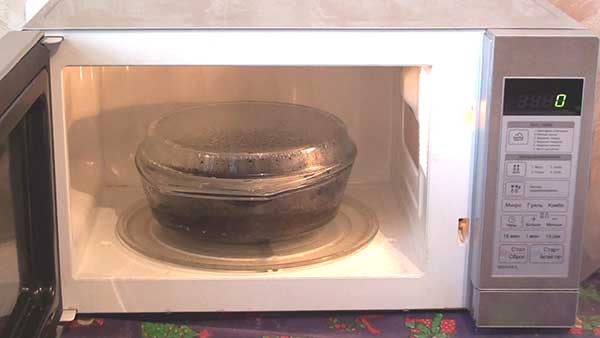
Important! If a piece of metal suddenly appears in the ground, then your microwave oven may explode, so first carefully check and be sure to sift the ground.
- In general, you can steam the soil in the oven (for 20-30 minutes at a temperature of 70-90 degrees). To do this, pour earth into a saucepan, moisten it and close it with a lid. Then leave to cool directly in the oven.
It is even more convenient to steam the soil in the "baking sleeve". Just remember to puncture the bag to prevent steam from tearing the bag.
Video: disinfecting the soil in the baking sleeve
- Alternatively, you can steam the soil in a water bath. To do this, pour the earth into a colander (no more than 5 cm high, optimally 2-3 cm) and hold it over a saucepan of boiling water for 10-15 minutes, stirring occasionally.
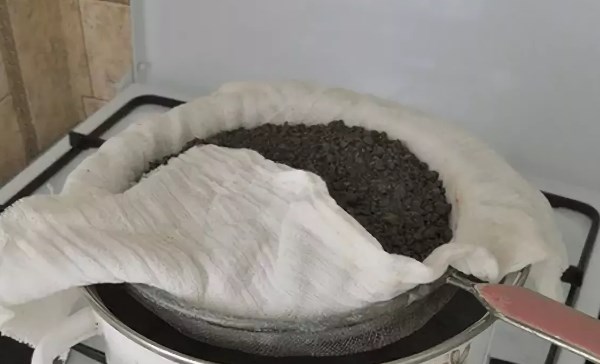
- The easiest is just spill the soil with boiling water, close the lid and wrap with a blanket.
Thus, steaming the soil is the most optimal way to decontaminate the soil for planting seedlings.
Treatment with fungicides and insecticides
Perhaps the most popular way to disinfect soil is to spill it with a strong (purple) solution of potassium permanganate. However, potassium permanganate is a very weak fungicide, the use of which has absolutely no effect other than self-soothing.
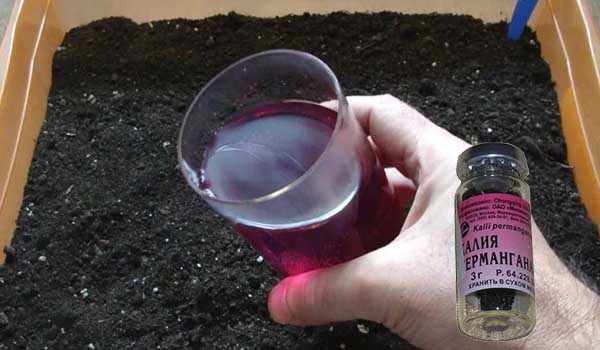
It is much more effective to use special fungicidal and insecticidal agents for etching the soil, for example, the same Aktara (insecticide), Previkur Energy (fungicide) and others. However, the above chemicals are used only in extreme cases (if the plants last year were seriously ill and were affected by dangerous pests), it is much better and more useful to use biological products: Fitosporin, Trichodermin, Alirin B, Gamair, Glyocladin (all fungicides), Akarin, Fitoverm (insecticides).
Land cultivation after disinfection with biological products (Fitosporin, Baikal, Radiance)
If you have carried out heat treatment of the land (subjected to steaming, or even more so to calcination), then after cooling the soil it is very desirable to immediately spill with a solution of one of the fungicidal biological products (eg, Fitosporin) to populate the soil with beneficial microorganisms (so to speak, carry out a soil restoration procedure), which, among other things, will suppress pathogenic bacteria and fungi.
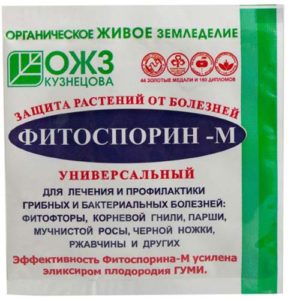
Instead of Fitosporin, you can also use Trichoderma (Trichodermin).
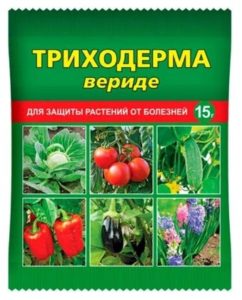
Many gardeners engaged in organic farming prefer to use EM preparations (= based on effective microorganisms) for preparing and cultivating the soil: the same Baikal, Shining 2 and others.
However! These EM preparations are more suitable for restoring fertility and repopulating the soil with beneficial microorganisms than for getting rid of pathogenic bacteria and fungi.
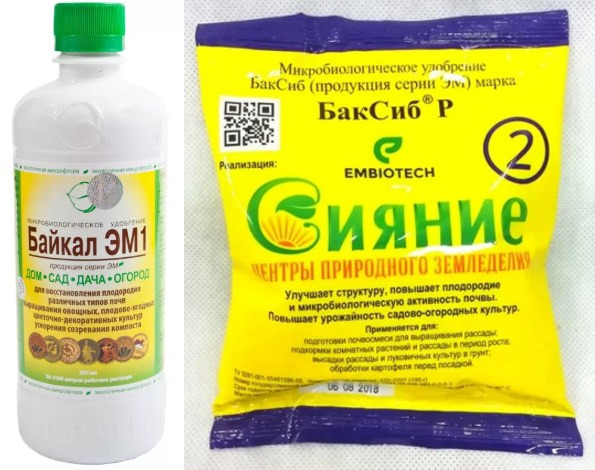
Note! It is necessary to spill the earth with solutions of biological products for its disinfection and colonization with beneficial microorganisms 1-3 weeks before sowing seeds.
Well, now you know what methods of soil disinfection exist and how to properly disinfect the soil. The main thing is not to overdo it, because many beneficial bacteria and fungi live in the soil, without which it will be dead ... Another thing is to get rid of pests and populate useful microflora.
Of course, you are free to act the old fashioned way and not "in any way" disinfect the soil, but spill at least boiling water, and then with a solution Fitosporin - it's not that difficult and not very expensive.

